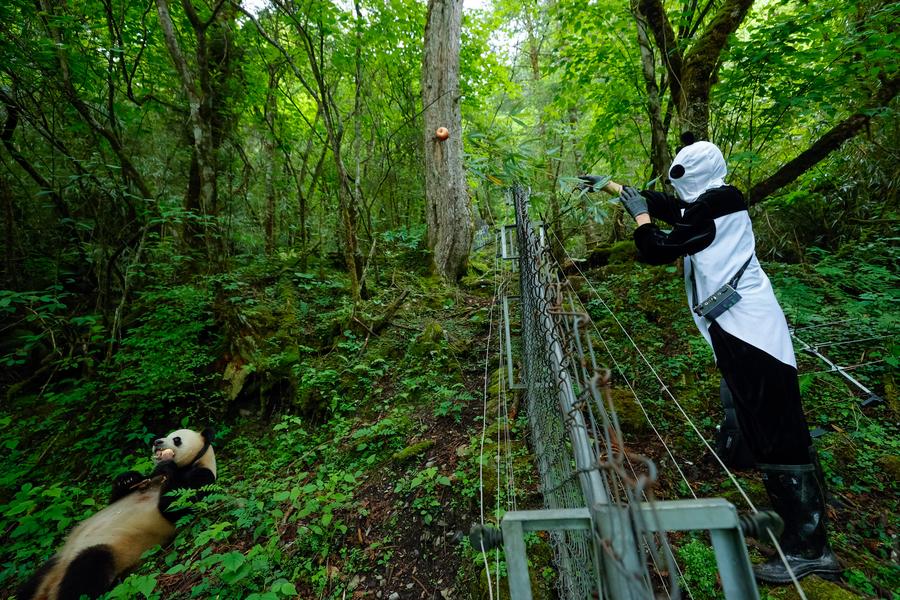National park boosts panda population, exploring harmony between humans and nature


CHENGDU -- With his GPS fully charged, notebook and flashlight packed, Shen Yuanping ran through a final check before heading deep into the mountains. Unlike most forest rangers, his mission was unique: to safeguard the habitat of China's national treasure, the giant panda.
Shen trekked through the mountains in Southwest China's Sichuan province along what is known as a "beast trail," a path filled with fallen leaves and worn smooth by the repeated steps of wild animals. His hiking shoes, their edges frayed, bore silent witness to the countless miles he had hiked.
As a ranger at China's Giant Panda National Park, his responsibilities include public education on forest and wildlife protection laws, enforcing laws against illegal logging and hunting, conducting fire patrols, and monitoring for pests and geological hazards.
What fills Shen and other rangers with pride is that more and more animals now roam the forests along their daily patrol routes, and the vegetation grows increasingly lush.
Established in 2021, the Giant Panda National Park has significantly improved the habitat of wild pandas and boosted the species' population. Speaking at the recently held Global Panda Partners Conference 2025 in Chengdu, Sichuan, head of the National Forestry and Grassland Administration, Liu Guohong, said the park integrated 73 isolated nature reserves, expanding the protected area to 22,000 square kilometers.
Recent statistics from the park's Sichuan section, which accounts for 88 percent of the total area, show that the annual number of wild giant panda sightings has increased from 135 to 185, indicating a stable recovery of the population.
























